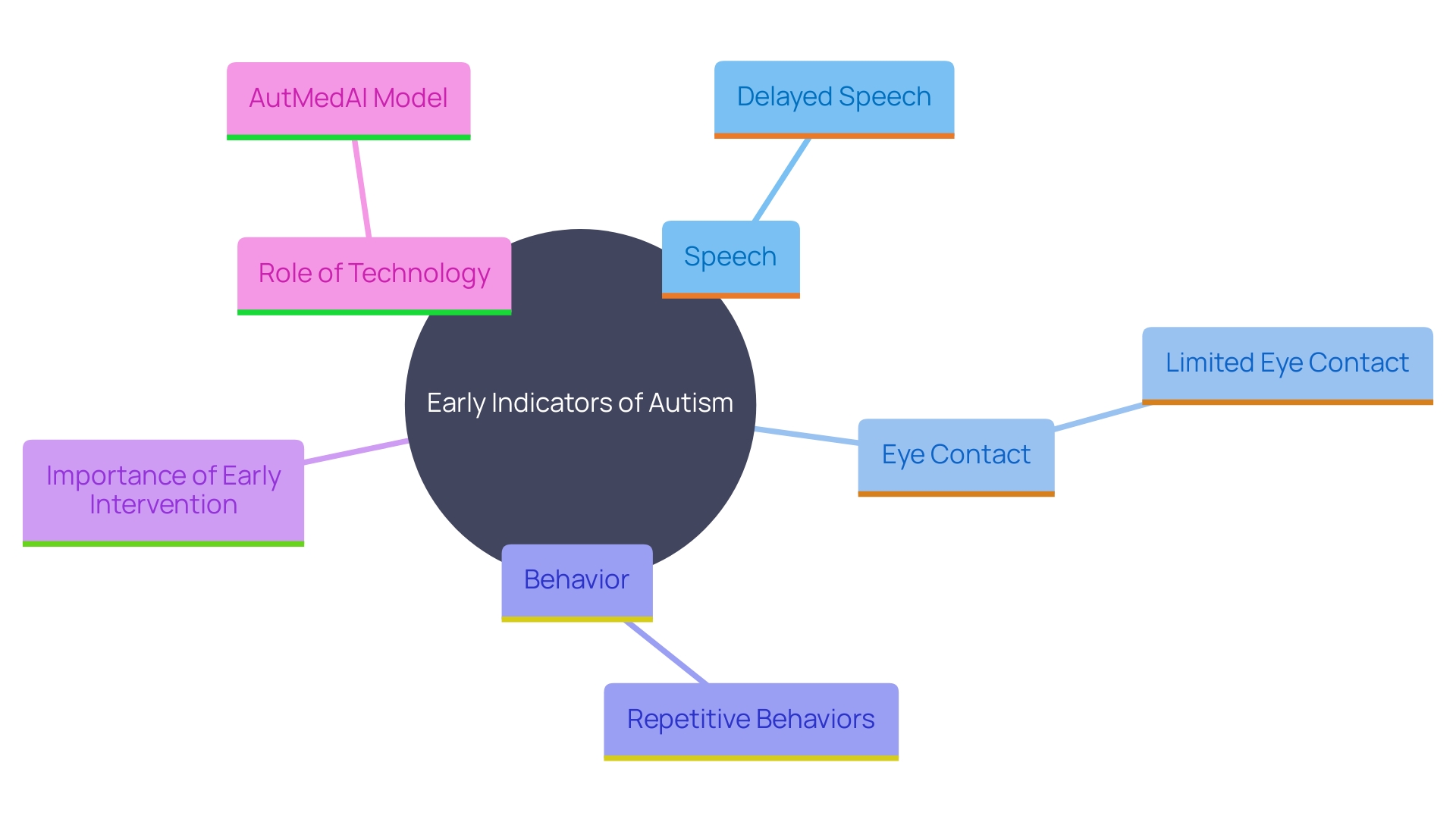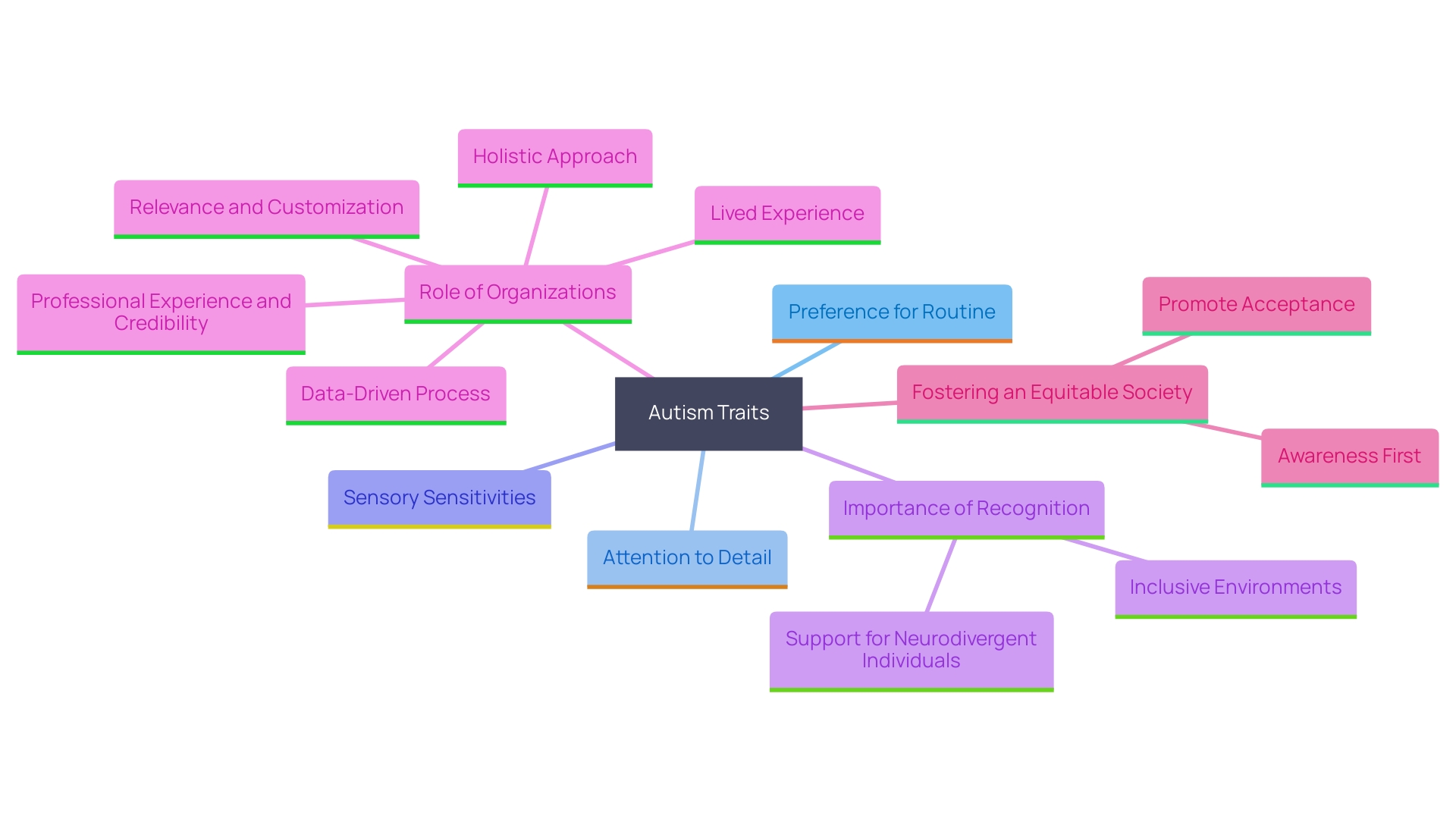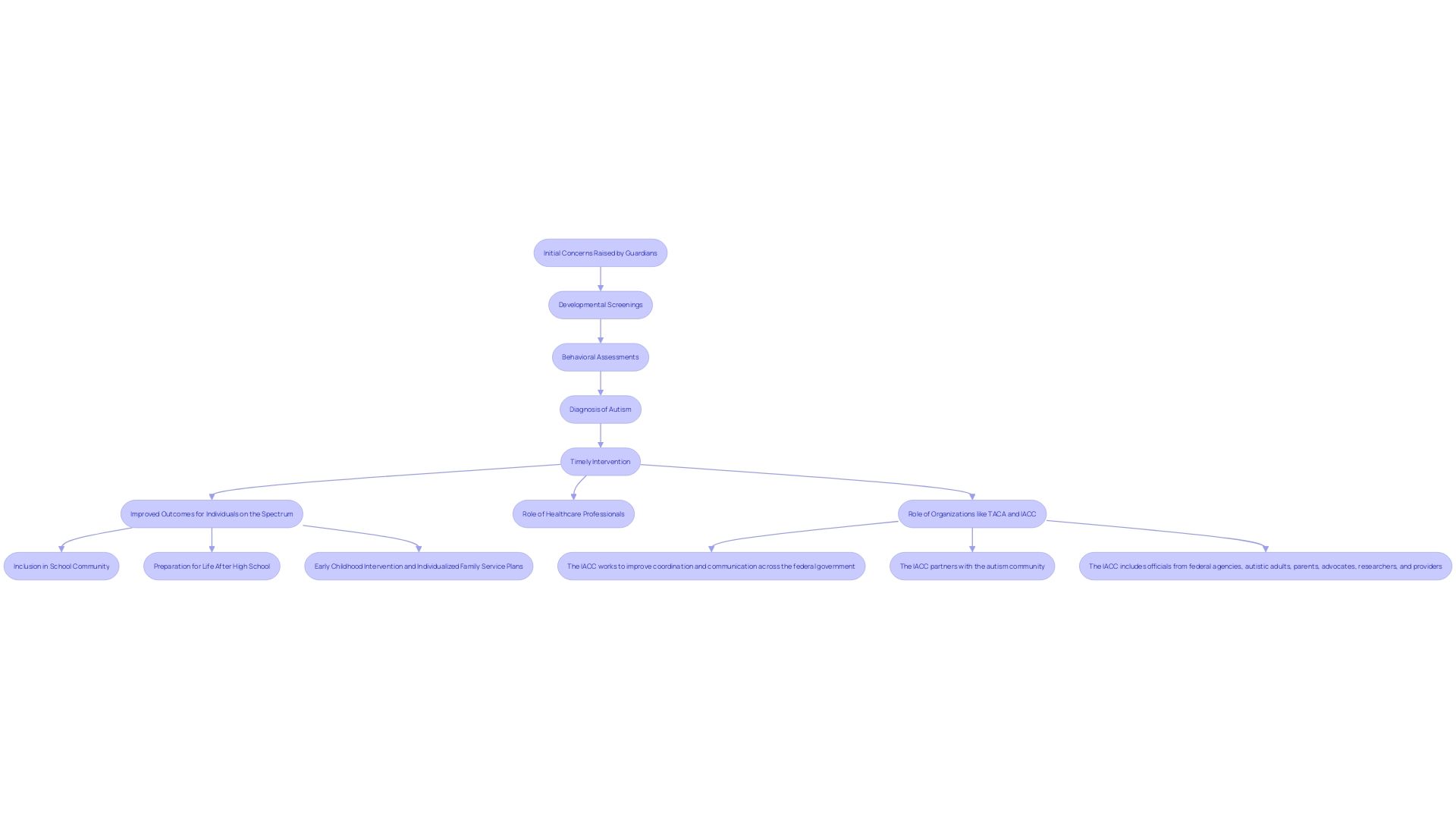Introduction
Identifying autism early in children can significantly enhance their developmental outcomes and overall well-being. Recognizing initial signs such as delayed speech, limited eye contact, and repetitive behaviors allows for timely interventions that can make a profound difference. Advances in technology, like the 'AutMedAI' model, now offer promising tools for early diagnosis, reinforcing the importance of vigilant observation during a child's formative years.
As children grow, their symptoms and challenges may evolve, necessitating continuous support to help them navigate social cues, maintain routines, and manage anxiety. This ongoing support remains crucial into adulthood, where structured environments and tailored care can help individuals with autism thrive. Understanding common traits and behaviors of autistic individuals, including sensory sensitivities and a preference for routine, is essential in fostering inclusive and supportive communities.
Accurate diagnosis and early assessment by healthcare professionals are key steps in accessing the necessary support services. Seeking professional help and connecting with supportive resources can empower families and individuals on their journey, ensuring they receive the guidance and assistance needed for a fulfilling life.
Early Signs of Autism in Children
Recognizing the early indicators of autism in young individuals is crucial for prompt intervention. Common indicators include delayed speech and language skills, limited eye contact, and a lack of interest in social interactions. Repetitive behaviors or routines are also prevalent. Parents might observe their offspring not responding to their name or showing minimal interest in playing with peers. These signs can differ, and each individual may exhibit them uniquely, highlighting the need for careful observation. Notably, some young individuals may repeat words or phrases over and over, a behavior known as echolalia, or focus intently on parts of objects. Unusual reactions to sensory experiences, such as sounds, smells, tastes, looks, or feelings, are also common.
Recent advancements in technology, such as the 'AutMedAI' model, have shown promise in initial diagnosis of the condition. Developed by analyzing data from approximately 30,000 individuals, this machine-learning model achieves nearly 80% accuracy in identifying autism in children under the age of two. Factors such as age of first smile, first short sentence, and eating difficulties were strong predictors, emphasizing that prompt and precise identification of these signs can significantly improve intervention strategies.
'The significance of initial childhood experiences on brain development cannot be overstated.'. Research indicates that the formative years from birth to age five are critical for cognitive, emotional, and social development. These initial experiences influence brain development, with 90% of brain growth taking place during this period. Both positive and negative experiences can have lasting effects, highlighting the significance of early recognition and intervention for young individuals displaying signs of the condition.

Signs of Autism in Older Children
As individuals with autism mature, their symptoms may evolve and introduce new difficulties. Numerous older kids may struggle with understanding social cues, maintaining conversations, or forming friendships. They often have an intense focus on specific interests and may find it difficult to adapt to changes in routine. Behavioral issues such as meltdowns or heightened anxiety in unfamiliar situations can also become more pronounced. 'As stated by the National Academies of Sciences, Engineering, and Medicine, acknowledging and tackling these challenges is essential for guaranteeing that autistic individuals receive the assistance necessary for healthy growth and well-being.'. Engaged and well-supported participation in school, home, and leisure activities is fundamental to their mental health. As Dr. David R. Offord, a renowned child psychiatrist, once emphasized, it's essential to make the “race fair” by providing the necessary resources and assistance to reduce chronic stress and meet the unique needs of autistic children. This approach not only aids their development but also promotes equity and inclusion in their daily lives.
Signs of Autism in Adults
Autism remains a significant part of many individuals' lives well into adulthood, with persistent symptoms affecting their daily routines. Adults on the spectrum often face challenges in social interactions and understanding nonverbal cues, and they may prefer structured and predictable environments. Sensory sensitivities and intense, focused interests are also common. Heightened awareness and acceptance of the condition in adults can improve assistance networks and promote community understanding. Christopher McDougle, MD, from Harvard Medical School emphasizes that “autistic individuals may live as long as the rest of us but once they graduate high school they no longer qualify for many services or receive guidance about ongoing medical care.” This highlights the need for continuous support throughout an autistic individual's life. Efforts like those led by David Birch, a paramedic concentrating on awareness of developmental disorders among healthcare professionals, are vital. These efforts help ensure that autistic individuals receive patient-centered care tailored to their unique needs.
Common Traits and Behaviors
Individuals with autism often display distinct traits and behaviors, such as a strong preference for routine, exceptional attention to detail, and innovative problem-solving skills. Sensory sensitivities are also common, influencing how they experience sounds, lights, and textures. Recognizing these characteristics is crucial in creating an inclusive environment that not only acknowledges but also celebrates these differences while offering the necessary support. As Dr. David Offord once noted, ensuring fair and supportive participation for all children, including those with disabilities, is fundamental for their mental health and overall well-being. This approach aligns with the goals of organizations like the National Academies of Sciences, Engineering, and Medicine, which strive to provide expert advice and shape policies that enhance the lives of neurodivergent individuals. By understanding and accommodating the unique needs of individuals on the spectrum, we pave the way for a more equitable and supportive society.

Diagnosis and Assessment
Diagnosing autism requires a thorough evaluation by healthcare professionals, which often includes developmental screenings, behavioral assessments, and interviews with caregivers. This comprehensive approach is crucial, as prompt diagnosis can significantly improve access to tailored support services that enhance an individual's quality of life. The urgency for prompt identification is echoed by organizations like The Autism Community in Action (TACA), which emphasizes that timely treatment leads to better outcomes. In fact, research shows that early intervention, such as behavioral therapy, can dramatically enhance a young person's development. Guardians who think their offspring might be on the spectrum are advised to pursue expert advice without delay, as this proactive measure can lead to significant changes. The Interagency Autism Coordinating Committee (IACC), a federal advisory group, also works tirelessly to enhance research and services related to developmental disorders, ensuring that families receive the assistance they require. As Dr. David Offord, a renowned psychiatrist for young individuals, once stated, ensuring children with disabilities have well-supported participation in their lives is key to equity and mental health, underscoring the importance of early and accurate diagnosis.

Seeking Professional Help
If you observe indications of the condition in your child or yourself, obtaining expert assistance is essential. Experts like psychologists, pediatricians, or developmental therapists can offer valuable insights and assessments. Early intervention is vital, as it can significantly enhance development and quality of life. The Autism Society highlights the significance of engaging with groups and resources, which can offer extra guidance and a sense of community. Additionally, the Interagency Autism Coordinating Committee (IACC) works to improve communication and coordination in autism services, ensuring families receive the support they need. Engaging with these resources can help you navigate the journey with confidence and understanding.
Conclusion
Identifying autism early in children is critical for fostering positive developmental outcomes. The signs, ranging from delayed speech and social engagement to sensory sensitivities, highlight the necessity for vigilant observation and timely intervention. Breakthrough technologies, such as the 'AutMedAI' model, underscore the potential for enhanced diagnostic accuracy, paving the way for effective strategies that can significantly improve a child's trajectory.
As children with autism grow, their needs evolve, necessitating ongoing support to navigate social complexities and manage anxiety. Recognizing the shift in their symptoms and behaviors is vital for ensuring they receive the necessary resources to thrive. Participation in various environments—school, home, and social settings—can greatly enhance their mental health, reinforcing the need for a supportive framework that adapts to their changing requirements.
In adulthood, the journey continues, as many individuals with autism face unique challenges that require sustained support. Awareness and understanding within communities play a pivotal role in creating inclusive environments where autistic individuals can flourish. Continuous advocacy for tailored care and resources is essential, ensuring that those on the spectrum receive the guidance needed for a fulfilling life.
Ultimately, the journey of understanding autism—from early detection to lifelong support—demands a collective effort. By prioritizing early diagnosis, fostering awareness, and providing ongoing resources, communities can empower families and individuals alike, ensuring that everyone has the opportunity to thrive and contribute meaningfully to society.




